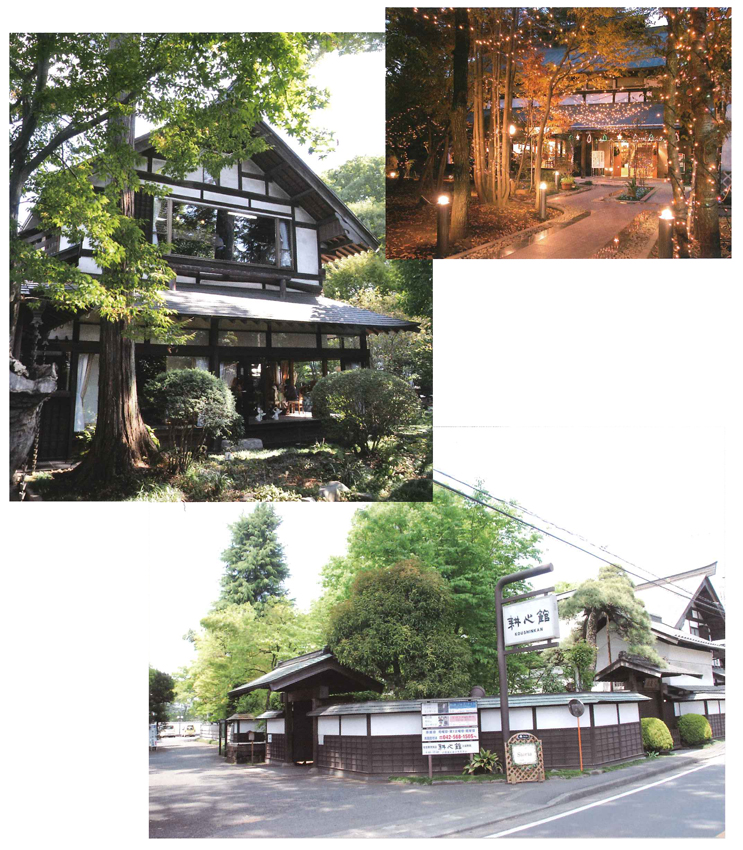 |
| |
| 母屋の原型は江戸時代末期の築造で、当時豪農としてその後醤油醸造業、養蚕業が営まれました。2階は整備がなされましたが、屋根構造に養蚕のなごりを見ることができます。特に和室の書院障子の木組みなどは、大正時代の建具の実例として貴重なものです。 | The house, with its main building structure from the late Edo period, was owned by a wealthy farmer who later ran soy sauce brewing and sericulture enterprises. Although the second floor underwent renovation work, the marks of sericulture activity is still evident in the roof structure. In particular, the timber work in the traditional Shoin-style architecture, as seen in the shoji screens in the Japanese-style rooms, offers a valuable insight into the Taisho era wood craftsmanship. |
| 昭和50年代にフランス料理店として大幅な改装を経て、平成12年、瑞穂町が取得し社会教育施設として整備したのが現在の耕心館です。江戸時代末期から現在に至るまで、人々の営みに伴い手を加えられた母屋は、和洋折衷様式の風情ある独特な建築美を生み出しました。 | Extensively renovated as a French restaurant between 1975-1984, the building was later acquired by Mizuho in 2000. The town then reorganized and re-launched it as a social education facility, the present Koshinkan Hall. Between the late Edo period and now, the main building was modified in succession to suit the lifestyle of the times, and this created a uniquely attractive harmony of Japanese and Western architecture. |
| 館内はくつろぎの空間や文化・芸術に触れる場として、親しまれています。 | The hall is a popular space to relax and enjoy art and culture. |